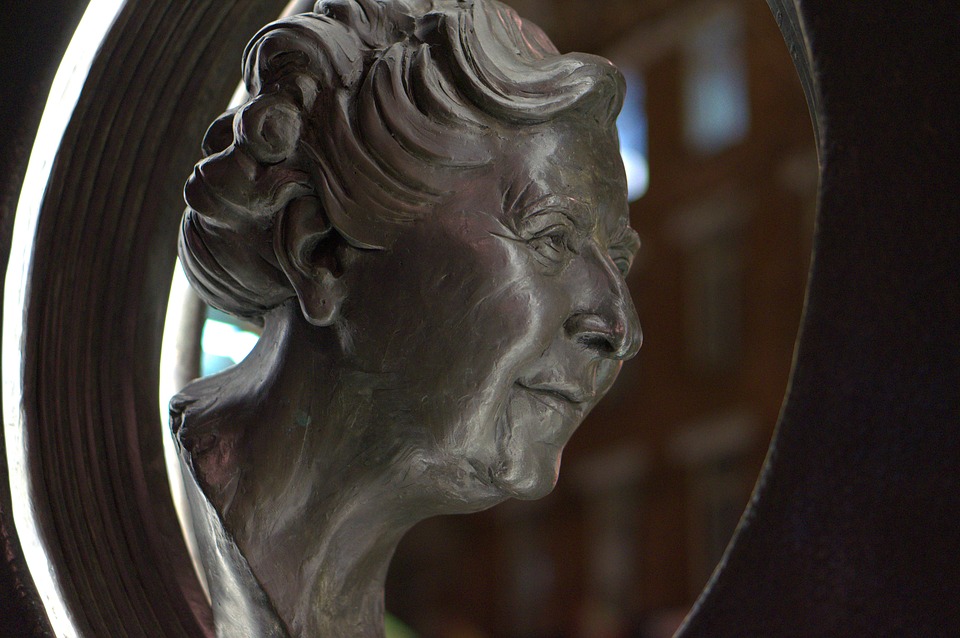by Writing Barn Intern Kris Koontz

Just a few weeks ago, I was hit with the devastating news that the Alley Theater in Houston (my hometown) would be delaying their annual “Summer Chills” program because of COVID-19. This struck me particularly hard, as it’s become something of a family tradition to go out and watch mystery plays done by their fantastic crew, most of them interpretations of some of Agatha Christie’s greatest works, from The Mouse Trap to Black Coffee.
Being a long-time Christie fan, I figured that, as an homage to the Alley Theater, I might as well do a light dive into the actual craft of mystery writing. Why do we like them? And what makes a mystery good or bad?
Let me start off in a rather unusual way. Just this spring semester, I took a course on the “Histories and Theories of Rhetoric” at St. Edward’s. One of the important early people involved in this history was Aristotle, a student of Plato, who had a much more scientific approach to rhetoric than his mentor. When studying Aristotle, I came across a term: topoi, meaning “commonplace”. Technically speaking, when Aristotle was using this term, topoi related to argumentative structures of rhetoric, but the reality was so much more far-reaching than that. There is important nuance that renders it applicable to creative writing too (which is, after all, a form of rhetoric). The famous “ethos, pathos, and logos” are involved with topoi; put simply, they mean “ethics/credibility as a writer”, “emotional appeal” and “logical appeal” respectively. But perhaps the most important nuance I came across was its relation to audience expectation, which ties directly into the mystery genre.
So, with that as context, let’s get to the good stuff.
The mystery genre has one unique topoi: that of the “red herring.” This is a character that is made to look like the antagonist, who is later revealed to be innocent. One of the best ever examples I’ve seen of a red herring appears in Agatha Christie’s The ABC Murders. I won’t spoil it, but in it she carefully makes it look like one character is the guilty party by showing his perspective throughout the book. The trick is, this poor guy is just a convenient scapegoat for the real murderer.
A word of warning when implementing a red herring into a mystery: keep the audience in mind. This topoi relies heavily on juxtaposition of evidence that the audience needs in order to have fun with the mystery. If you were to put a red herring into your narrative, only to then give no indication of who the true criminal is, you have done two things. First, you’ve just broken the whole point of having a red herring. Second, you’ve betrayed your audience’s trust, thereby breaking Aristotle’s concept of ethos and logos in one fell swoop. Breaking the first one is bad enough, but I’d argue the second is even worse. It is vital to remember that writing a good red herring is a careful balancing act of giving the false character narrative while also ensuring the real antagonist is still active.
The best way to visualize this balance is to think of your mystery narrative as a maze. The real solution is there at the center, waiting, while the red herring path eventually leads to a dead end – a false conclusion. That dead end must be made apparent to the audience for there to be trust about the real solution. Christie makes clear that The ABC Murders’ red herring is either there by happenstance or, later, that someone is arranging to have him be present in the city where a murder takes place.
What, then, does a bad red herring look like?
Let me jump to from Agatha Christie to Disney’s Zootopia, a cute animated adventure where a bunny and a fox team up to solve the disappearance of a citizen.
(Spoilers Ahead!)

For clarification, there are three mysteries in this film that unfold one after the other. Mystery one is what happened to the missing citizen. Mystery two is why the predators in the city are “going savage” seemingly at random. Mystery three involves who might be responsible. The first two mysteries are solved to audience satisfaction: their missing person has been stowed in a guarded hospital, while the second is answered in the form of a plant-based concoction. Both of those adhere to Aristotelian ethos and logos. Mystery three is where the problem arises. In the film, we are given two red herrings: the crime boss Mr. Big and the city’s Mayor Lionheart. Mr. Big reveals himself to be an ally, while Mayor Lionheart is briefly painted as an antagonist before he, too, is revealed to not be the real threat. The real threat, it is revealed, is Assistant Mayor Bellwether.
I remember seeing that reveal and going “Huh?“
The reason this was a poor choice relates back to what I said about red herrings and audience expectations. There was no evidence Bellwether was the antagonist for the entire duration of the film. No look behind the scenes, no odd behavior. The audience was given two red herrings but no contrasting evidence (i.e. “the real antagonist”) to juxtapose them with. So when the reveal came, I wasn’t so much shocked as I was baffled. I honestly thought I’d missed something important somewhere. Only after two more watches did I realize I hadn’t.
The reason Christie’s mysteries work so well is what I like to call the “Ah-ha!” moment. It’s that point right at the end where all of the pieces she so cleverly laid are mercilessly slammed into place. The ABC Murders does this well, as does Sleeping Murder and Appointment with Death. Murder on the Orient Express in particular is famous for it’s “Ah-ha!” moment. The reason all of these reveals work is because all of the evidence is there, true and false, so when the red herrings are brushed away and the real evidence is stated, it’s satisfying because the reader didn’t miss anything – it was all laid out for them. If you don’t leave that trail of breadcrumbs, you’re robbing the reader of the “Ah-ha!” revelation.
Those breadcrumbs don’t necessarily need to be super obvious or make sense during the first read, either. In Death in the Clouds, Christie dropped one such breadcrumb within the first two chapters, but I didn’t realize its importance until it was pointed out in the conclusion. If you’re reader goes “How the heck did I miss that?” then you did it right. But if they’re left wondering what they missed, then you should reconsider whether or not your evidence truly falls in line with your conclusion. Your audience won’t think you’re being clever if you pull the reveal so far out of left field in order to surprise them, they’ll just be confused and annoyed with you.
I know in today’s era of “twists” and “surprises” that it can be tempting to yank your audience in order to shock them. Game of Thrones did it. Disney did it. All the big players seem to like doing this. But that’s not what a real mystery does. Rather, it works on known structures and topoi while still teasing our brains like a good jigsaw puzzle. And that is really the best way to view the mystery genre: a giant puzzle where all the pieces snap into place to form a bigger, clearer whole. If you leave out some of those pieces from your audience, or cheat them by saying “Well, actually…” and changing the big picture last second, you’re breaking the structural design of a mystery.
It’s fine to lead your audience along when you write a mystery – that’s the point. They’re intricate puzzles made of breadcrumbs. A little misleading trickery is fine, too – that’s the fun of planting a red herring. But it’s important to remember to juxtapose the red herring with contradictory evidence. That is what the red herring is designed to do: lead the audience astray but, in the end, for the audience to realize that their lead is indeed false. That is what makes the conclusion so much more satisfying.
If any you want to help Houston’s Alley Theater through these difficult times, here is a link to their website where you can donate.
